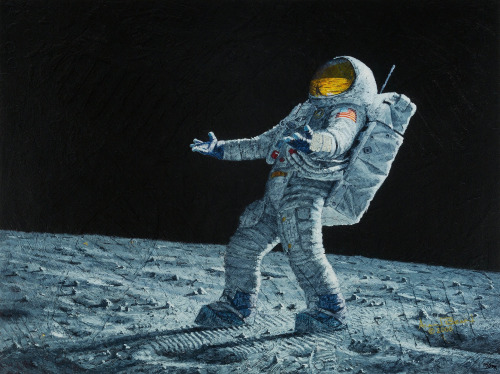"Two Possibilities Exist: Either We Are Alone In The Universe Or We Are Not. Both Are Equally Terrifying.”
"Two possibilities exist: either we are alone in the Universe or we are not. Both are equally terrifying.”
Arthur C. Clarke
Via nowspacetime
animation by ©️Harry Evett
More Posts from Epic-flight and Others

Orbiting - 210216

The first step on the Moon, illustrated by Norman Rockwell for Look, 1967.

Glass Mountain - 220418
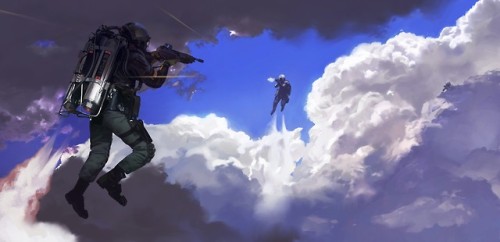

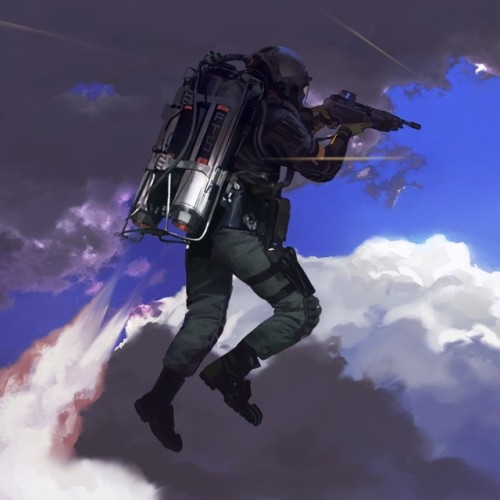
Jet pack - Faraz Shanyar

“Intruder Weather” by Lou Drendel. The first squadron to fly the A-6 Intruder in combat was VA-75, in 1965. This is the A-6A of Lt Don Boecker on a typical all-weather mission.
First all-female, spacewalk in history featuring astronauts:
Christina Koch and Jessica Meir in US EVA-58
Via Nasajpl
Music: Jamaal “Reality” Meeks
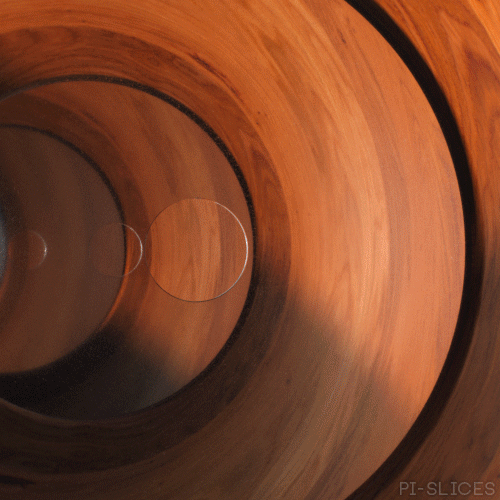
Circular Windows - 221006
The Lives, Times, and Deaths of Stars
Who among us doesn’t covertly read tabloid headlines when we pass them by? But if you’re really looking for a dramatic story, you might want to redirect your attention from Hollywood’s stars to the real thing. From birth to death, these burning spheres of gas experience some of the most extreme conditions our cosmos has to offer.

All stars are born in clouds of dust and gas like the Pillars of Creation in the Eagle Nebula pictured below. In these stellar nurseries, clumps of gas form, pulling in more and more mass as time passes. As they grow, these clumps start to spin and heat up. Once they get heavy and hot enough (like, 27 million degrees Fahrenheit or 15 million degrees Celsius), nuclear fusion starts in their cores. This process occurs when protons, the nuclei of hydrogen atoms, squish together to form helium nuclei. This releases a lot of energy, which heats the star and pushes against the force of its gravity. A star is born.

Credit: NASA, ESA and the Hubble Heritage Team (STScI/AURA)
From then on, stars’ life cycles depend on how much mass they have. Scientists typically divide them into two broad categories: low-mass and high-mass stars. (Technically, there’s an intermediate-mass category, but we’ll stick with these two to keep it straightforward!)
Low-mass stars

A low-mass star has a mass eight times the Sun’s or less and can burn steadily for billions of years. As it reaches the end of its life, its core runs out of hydrogen to convert into helium. Because the energy produced by fusion is the only force fighting gravity’s tendency to pull matter together, the core starts to collapse. But squeezing the core also increases its temperature and pressure, so much so that its helium starts to fuse into carbon, which also releases energy. The core rebounds a little, but the star’s atmosphere expands a lot, eventually turning into a red giant star and destroying any nearby planets. (Don’t worry, though, this is several billion years away for our Sun!)

Red giants become unstable and begin pulsating, periodically inflating and ejecting some of their atmospheres. Eventually, all of the star’s outer layers blow away, creating an expanding cloud of dust and gas misleadingly called a planetary nebula. (There are no planets involved.)

Credit: NASA, ESA, and the Hubble Heritage Team (STScI/AURA)
All that’s left of the star is its core, now called a white dwarf, a roughly Earth-sized stellar cinder that gradually cools over billions of years. If you could scoop up a teaspoon of its material, it would weigh more than a pickup truck. (Scientists recently found a potential planet closely orbiting a white dwarf. It somehow managed to survive the star’s chaotic, destructive history!)

High-mass stars
A high-mass star has a mass eight times the Sun’s or more and may only live for millions of years. (Rigel, a blue supergiant in the constellation Orion, pictured below, is 18 times the Sun’s mass.)

Credit: Rogelio Bernal Andreo
A high-mass star starts out doing the same things as a low-mass star, but it doesn’t stop at fusing helium into carbon. When the core runs out of helium, it shrinks, heats up, and starts converting its carbon into neon, which releases energy. Later, the core fuses the neon it produced into oxygen. Then, as the neon runs out, the core converts oxygen into silicon. Finally, this silicon fuses into iron. These processes produce energy that keeps the core from collapsing, but each new fuel buys it less and less time. By the point silicon fuses into iron, the star runs out of fuel in a matter of days. The next step would be fusing iron into some heavier element, but doing requires energy instead of releasing it.
The star’s iron core collapses until forces between the nuclei push the brakes, and then it rebounds back to its original size. This change creates a shock wave that travels through the star’s outer layers. The result is a huge explosion called a supernova.

What’s left behind depends on the star’s initial mass. Remember, a high-mass star is anything with a mass more than eight times the Sun’s — which is a huge range! A star on the lower end of this spectrum leaves behind a city-size, superdense neutron star. (Some of these weird objects can spin faster than blender blades and have powerful magnetic fields. A teaspoon of their material would weigh as much as a mountain.)

At even higher masses, the star’s core turns into a black hole, one of the most bizarre cosmic objects out there. Black holes have such strong gravity that light can’t escape them. If you tried to get a teaspoon of material to weigh, you wouldn’t get it back once it crossed the event horizon — unless it could travel faster than the speed of light, and we don’t know of anything that can! (We’re a long way from visiting a black hole, but if you ever find yourself near one, there are some important safety considerations you should keep in mind.)

The explosion also leaves behind a cloud of debris called a supernova remnant. These and planetary nebulae from low-mass stars are the sources of many of the elements we find on Earth. Their dust and gas will one day become a part of other stars, starting the whole process over again.
That’s a very brief summary of the lives, times, and deaths of stars. (Remember, there’s that whole intermediate-mass category we glossed over!) To keep up with the most recent stellar news, follow NASA Universe on Twitter and Facebook.
Make sure to follow us on Tumblr for your regular dose of space: http://nasa.tumblr.com.
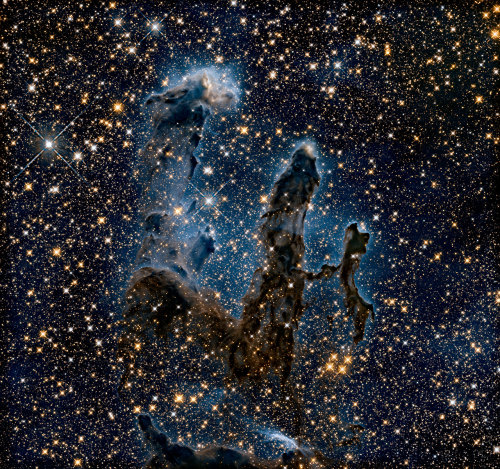
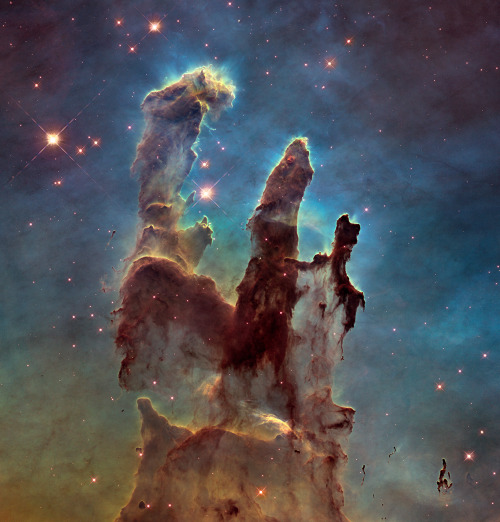
Sometimes… there’s more than meets the eye. 👀 You’re looking at two very different takes on an iconic image.
Human eyes can see only a small portion of the range of radiation given off by the objects around us. We call this wide array of radiation the electromagnetic spectrum, and the part we can see visible light.
In the first image, researchers revisited one of Hubble Space Telescope’s most popular sights: the Eagle Nebula’s Pillars of Creation. Here, the pillars are seen in infrared light, which pierces through obscuring dust and gas and unveil a more unfamiliar — but just as amazing — view of the pillars. The entire frame is peppered with bright stars and baby stars are revealed being formed within the pillars themselves. The image on the bottom is the pillars in visible light.
Image Credit: NASA, ESA/Hubble and the Hubble Heritage Team
Make sure to follow us on Tumblr for your regular dose of space: http://nasa.tumblr.com.
-
 cernunnos1990 reblogged this · 3 months ago
cernunnos1990 reblogged this · 3 months ago -
 cernunnos1990 liked this · 3 months ago
cernunnos1990 liked this · 3 months ago -
 amchrisha liked this · 9 months ago
amchrisha liked this · 9 months ago -
 johnsrose23 liked this · 11 months ago
johnsrose23 liked this · 11 months ago -
 urban-sith liked this · 11 months ago
urban-sith liked this · 11 months ago -
 lilmissfluffii liked this · 1 year ago
lilmissfluffii liked this · 1 year ago -
 xstarrydreamsx reblogged this · 1 year ago
xstarrydreamsx reblogged this · 1 year ago -
 dekxme liked this · 1 year ago
dekxme liked this · 1 year ago -
 aruseyoubigdumbidiot reblogged this · 1 year ago
aruseyoubigdumbidiot reblogged this · 1 year ago -
 m-f1 liked this · 1 year ago
m-f1 liked this · 1 year ago -
 shaorna liked this · 1 year ago
shaorna liked this · 1 year ago -
 windalwaysloses liked this · 1 year ago
windalwaysloses liked this · 1 year ago -
 huntingwatch liked this · 1 year ago
huntingwatch liked this · 1 year ago -
 dontknowwhataboutyou liked this · 1 year ago
dontknowwhataboutyou liked this · 1 year ago -
 lisidnc reblogged this · 2 years ago
lisidnc reblogged this · 2 years ago -
 lisidnc liked this · 2 years ago
lisidnc liked this · 2 years ago -
 when-ifallandhitthe-ground reblogged this · 2 years ago
when-ifallandhitthe-ground reblogged this · 2 years ago -
 when-ifallandhitthe-ground liked this · 2 years ago
when-ifallandhitthe-ground liked this · 2 years ago -
 xx-pseudopsycho-xx liked this · 2 years ago
xx-pseudopsycho-xx liked this · 2 years ago -
 nmnnmn liked this · 2 years ago
nmnnmn liked this · 2 years ago -
 gleet17 liked this · 2 years ago
gleet17 liked this · 2 years ago -
 mvydude reblogged this · 2 years ago
mvydude reblogged this · 2 years ago -
 vaquitacochuda reblogged this · 2 years ago
vaquitacochuda reblogged this · 2 years ago -
 733s reblogged this · 2 years ago
733s reblogged this · 2 years ago -
 space-librarian liked this · 2 years ago
space-librarian liked this · 2 years ago -
 physicalalalabuse reblogged this · 2 years ago
physicalalalabuse reblogged this · 2 years ago -
 keopps66 liked this · 2 years ago
keopps66 liked this · 2 years ago -
 psydewinder liked this · 2 years ago
psydewinder liked this · 2 years ago -
 starttheheadbanging liked this · 2 years ago
starttheheadbanging liked this · 2 years ago -
 fantasylessuser reblogged this · 2 years ago
fantasylessuser reblogged this · 2 years ago -
 fantasylessuser liked this · 2 years ago
fantasylessuser liked this · 2 years ago -
 daydreaminl0vin reblogged this · 2 years ago
daydreaminl0vin reblogged this · 2 years ago -
 daydreaminl0vin liked this · 2 years ago
daydreaminl0vin liked this · 2 years ago -
 faded-and-fortunate liked this · 2 years ago
faded-and-fortunate liked this · 2 years ago -
 wilderebellion liked this · 2 years ago
wilderebellion liked this · 2 years ago -
 babybunny1938 liked this · 2 years ago
babybunny1938 liked this · 2 years ago -
 sillypainterbanditbanana liked this · 2 years ago
sillypainterbanditbanana liked this · 2 years ago -
 afc-agitprop reblogged this · 2 years ago
afc-agitprop reblogged this · 2 years ago
